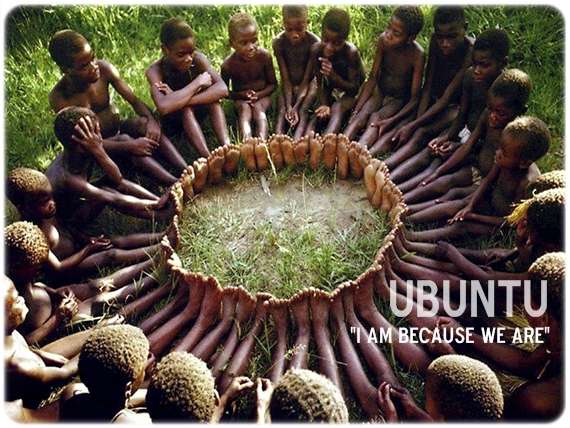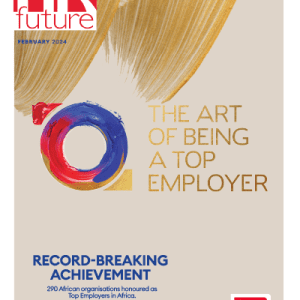I clearly remember my childhood bullies and how I had to choose which road to take from school to reduce the possibility of being bullied on my way home. Or how someone pushed me from my bicycle to have some fun watching me hit the tar. These were the not-so-subtle instances.
The more subtle instances were those comments or conversations the children and some adults had with each other, oblivious to the fact that I could hear them and were told “they didn’t mean anything by it”.
These memories may sound familiar to some of you. Like me, you may recognise, in these past experiences, some common everyday experiences that we encounter at work or in other interactions.
It turns out the child-bullies grow up. The bully-behaviours are so part of their behaviour-DNA that they don’t know any other way to interact with and react to others. They often become the workplace bullies.
I need to interrupt myself here. I met a couple of my childhood bullies as adults. They asked me to forgive them. Of course, I did, and subsequently became great friends with some. It is true that some of us become aware of our past actions and choose to behave differently.
Although there are numerous definitions and descriptions of workplace bullying, the following definition summarises any of the elements of bullying: “Unwanted persistent conduct (or a single incident) which is serious and demeans, humiliates, or creates a hostile or intimidating work environment. This conduct includes a wide range of insulting, demeaning or intimidating behaviours that lower the self-esteem or self-confidence of an employee”.
What happened when COVID-19 hit, and lockdown started, was that remote working conditions brought our offices online and into our homes. With it came all the realities of our offices as well.
While there are no longer that many opportunities for physical “misdemeanours” like inappropriate touching or flirting or unhealthy watercooler conversations, workplace bullying is still very much alive.
Recent studies conducted globally indicate a rise in cyberbullying and virtual harassment. The reason for this is that virtual workspaces can be just as accommodating to bullying as physical spaces. Let’s look at some examples:
- Video calls and online meetings facilitate private chats between colleagues that can become toxic on a personal level. They create an illusion of privacy and confidentiality.
- Disconnecting from or tuning someone out can be done with a click of a button. Through neuroscientific research, we also know that we experience social rejection in the same way as physical pain. Therefore it can hurt physically when we feel left out or unappreciated.
- We no longer have the ‘luxury’ of a confrontation as we would have in a traditional workplace setting. There were spaces where you could have a face-to-face argument and resolve disagreements.
Researchers of workplace bullying came across an interesting pattern. They found that, in the past, the number of bullying and harassment instances spiked in organisations when workplace security was threatened, just like what we are experiencing right now.
Our current reality is that people experience more stress due to uncertain job security, health issues, and the morphing of work and home lives. These experiences affect the expectations, communication norms and thought processes that go into work duties, often with subsequent changes in our everyday behaviour.
The following behaviours break down the culture in an organisation, and an organisation cannot thrive while nurturing a toxic culture:
- Spreading malicious rumours;
- Insulting someone;
- Degrading, or picking on someone;
- Exclusion or victimisation;
- Unfair treatment;
- Unwelcome sexual advances and gestures;
- Making unsubstantiated threats about job security;
- Undermining a competent worker through overloading or constant criticism; or
- Intentional blocking of promotion or training opportunities.
These are all forms of bullying that employees can report to their team leaders or managers or other structures in place in their workplace.
The pressure on leaders to identify bullying behaviour and do something to eradicate it has mounted since virtual workplaces became the norm. It is no longer enough to have an ear to the ground and observe the interactions between team members and colleagues. Leaders need to check in on each team member every day and connect with them on a deeper level. They need to pick up the subtle changes in their team members’ behaviour – those behaviours that will indicate that someone is not okay, like a chatty person suddenly being quiet, or someone who usually shares opinions and ideas with team members becoming aloof. More important, leaders need to have the ability to have courageous conversations with their team members. They need to be able to create a safe space where conversations can happen in candour.
One way to ensure that leaders are equipped with the right skills to achieve the above is to have them trained as coaches. I have experienced it myself in a corporate environment. I reported to a great manager, whose coaching abilities were incredible, and that prompted me to invest in a quality coach training program endorsed by the ICF. My training gave me the ability to lead my teams to ensure we were clear about our goals, knew how to achieve them and managed the changes in our environments in ways that included every team member and strengthened the team as a whole.
Developing coaching skills for leaders is an ongoing process in organizations with strong coaching cultures. For a couple of years already managers and leaders using coaching skills continues to be the most commonly deployed coaching modality for high performing organizations, according to the Building Strong Coaching Cultures for the Future, a 2019 study from the International Coaching Federation and the Human Capital Institute (HCI).
Workplaces in South Africa report bullying, but there are no statistics available. Like in many other countries, there is no law in South Africa prohibiting bullying per se. However, a process is in its infant stage to address bullying and harassment in the workplace.
“On 20 August 2020, the Minister of Employment and Labour in South Africa published the Draft Code of Good Practice on the Prevention and Elimination of Violence and Harassment in the World of Work (Draft Code), for public comment. This Draft Code has been guided by various conventions adopted by the International Labour Organisation, including the recent convention and recommendation on eliminating and preventing Violence and Harassment in the World of Work (Convention 190, 21 June 2019). The Draft Code lists four forms of violence and harassment in the workplace, namely; Sexual violence and harassment; Racial, ethnic, or social origin violence and harassment; Workplace bullying; and Protected disclosures”.
Bullying is a concerning reality, however it should not and need not be. Employees should be made aware of bullying behaviour and the means to report it to their managers or team leaders or Human Resource departments. Awareness, vigilance and open lines of communication and even offering professional coaching can do much to stymie the flow of harmful and toxic behaviours in organisations and online.
If you need support on your organisation’s coaching journey, do contact us at ICF and our team of volunteers in South Africa will be happy to help.
The International Coaching Federation (ICF) is the world’s largest organization leading the global advancement of the coaching profession and fostering coaching’s role as an integral part of a thriving society. Founded in 1995, its 35,000-plus members located in more than 140 countries and territories work toward common goals of enhancing awareness of coaching and upholding the integrity of the profession through lifelong learning and upholding the highest ethical standards. Through the work of its six unique family organizations, ICF empowers professional coaches, coaching clients, organizations, communities and the world through coaching.
ICF South Africa is a Chartered Chapter of ICF with 456 members (February 2021). Contact us at: [email protected]
Christine Steyn is an Associate Certified Coach® by the ICF. She holds a BA degree in Communication and Psychology. Her 18-year career in the corporate financial industry is testament to her strong leadership and management capabilities, as well as the ability to successfully influence the operational environment in a difficult financial climate. She has a deep understanding of the dynamics of personal interaction and the ability to improve the quality of conversations through candour and authenticity. Christine is experienced in management coaching, leadership coaching, coaching small business owners and team coaching.




























